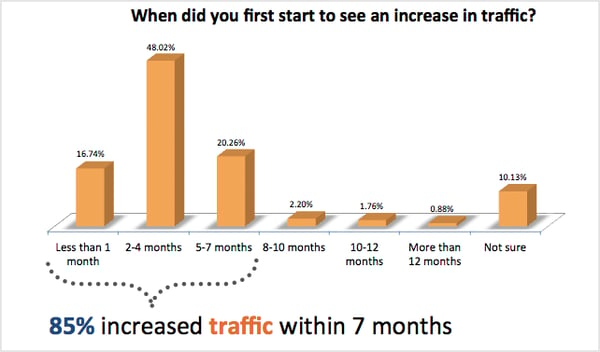
At its core, Inbound Marketing is all about gaining visibility and exposure in the digital world by delivering quality content designed to draw prospects’ attention towards your brand. In other words, it’s your starting point in the hunt for generating leads and eventually building relationships with them. As a standalone discipline, however, Inbound Marketing will only “take care” of discovering prospects that will fill the upper part of the sales funnel. The combination of your search, social and content marketing efforts will only have a real impact on reaching conversion and acquiring actual customers if marketing automation technologies get deployed.
Before getting into detail about the importance of aligning Inbound Marketing with marketing automation, let’s first explore the basic “branches” of the Inbound Marketing tree. In order to grasp and realise its potential as a whole discipline, it’s crucial that you first master all three fundamental marketing techniques in its remit:
Content marketing
If we continue with the botanic association, then content marketing will represent the roots of the tree. Blog posts, white papers, videos, case studies, etc are all your building blocks, your intelligence assets, whose goal is to deliver value to the prospect in an educational or an emotional way. Recent statistics show that companies with active blogs receive 97% more leads. Additionally, the fact that 91% of B2B marketers use content marketing shouldn’t come as a surprise either.
Social media
If content marketing is the root of the Inbound Marketing tree, we might label social media as its stem. LinkedIn, Twitter, Facebook, Instagram, etc. – those are the platforms where your prospects virtually reside. Social Media is not only the place for discovering and monitoring leads; it’s also the ultimate tool for establishing personalised one-to-one relationships with relevant prospects. Irrespective of your chosen strategy for approaching and engaging with your audience, never underestimate the importance of Content Marketing because quality content is one of the top three reasons people will choose to connect with your brand on Social Media.
Search marketing
The last pillar of Inbound Marketing – the “crown” of the tree – goes to Search Marketing. Long term SEO strategies for boosting traffic organically or investments in AdWords and PPC (pay-per-click) advertising for gaining faster exposure – the choice is yours. What’s important to acknowledge is that Search Marketing is also built on the backbone of quality content with the purpose of helping you gain more inbound traffic towards your website.
The pain points of doing inbound marketing
Keeping in mind the three pillar points of Inbound Marketing: Content, Social and Search, we can conclude that it’s undoubtedly the most successful practice for improving awareness and generating leads. No wonder that, as reported by Hubspot, 93% of companies using Inbound Marketing increase lead generation.

Inbound marketing increases traffic by 85% within 7 months Hubspot
However, the Marketers' goal is greater than feeding the sales funnel with prospects. Leads are potential buyers, but to reach that stage, they require nurturing. Inbound Marketing, by itself, can’t reach that goal. Producing the highest quality content, receiving great engagement in Social or keeping good visibility in Search: all those are more than compulsory in your pursuit of new prospects; but none of them will necessarily guarantee conversion. What’s the solution?
Inbound marketing aligned with marketing automation
Marketing automation works as the oil that greases the prospect’s journey through the sales funnel, leaving no space for an eventual hitch. In non-metaphorical language, this alignment will help you realise many positives in your efforts towards conversion. Some of which are:
Define the value of each lead
Lead scoring is a powerful tool that automatically grades and defines the lead’s quality. It helps you avoid wasting time on prospects that will bring no value to your sales funnel. At the same time, following a set of characteristic – initially determined by you – lead scoring modules will instantly point out highest potential leads, thus increasing the chances of higher success rates of your sales reps.
Lead nurturing
Marketing Automation provides an intelligent approach towards quality but not yet sales-qualified leads. Automated lead nurturing campaigns are your best asset to deliver highly targeted and personalised messages to the right people at the right time.
Behavioural targeting
Although resembling the Big-Brother style, the ability to constantly target the behaviour of your prospects gives you the advantage of a timely reaction. Thanks to marketing automation, you will constantly be alerted about the actions of your leads and never skip a good opportunity for conversion.
Content and channel optimisation
Based on analysis from visitors’ actions, Marketing Automation will additionally help you evaluate the value of your content assets and the platforms through which they get distributed. Hence giving you the option to optimise your content collateral and get an overview of which channels bring the greatest awareness, leads and traffic.
Once again, imagine that your Inbound Marketing's 3 core pillars – Content, Social and Search – were represented by a tree's roots, stem and crown. If we were to cut any of those parts, the tree wouldn't survive. But there's more to it: the tree's life also depends on its harmonious relationship with the environment in which its roots reside: Earth. Removing Earth from the picture will no longer make sense for the tree to survive. Same goes for inbound marketing. Without marketing automation, marketers will never be able to grasp the full potential and ROI of their content, Social and Search strategies in their drive to acquire customers.


